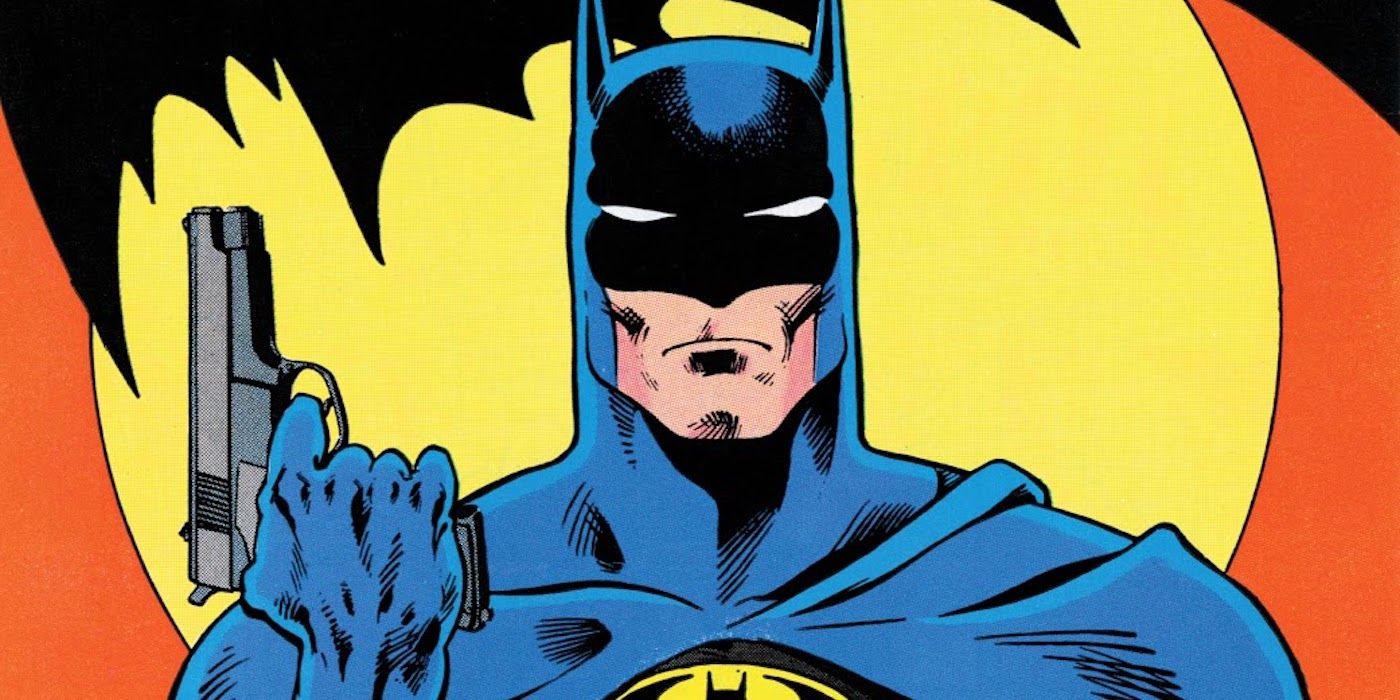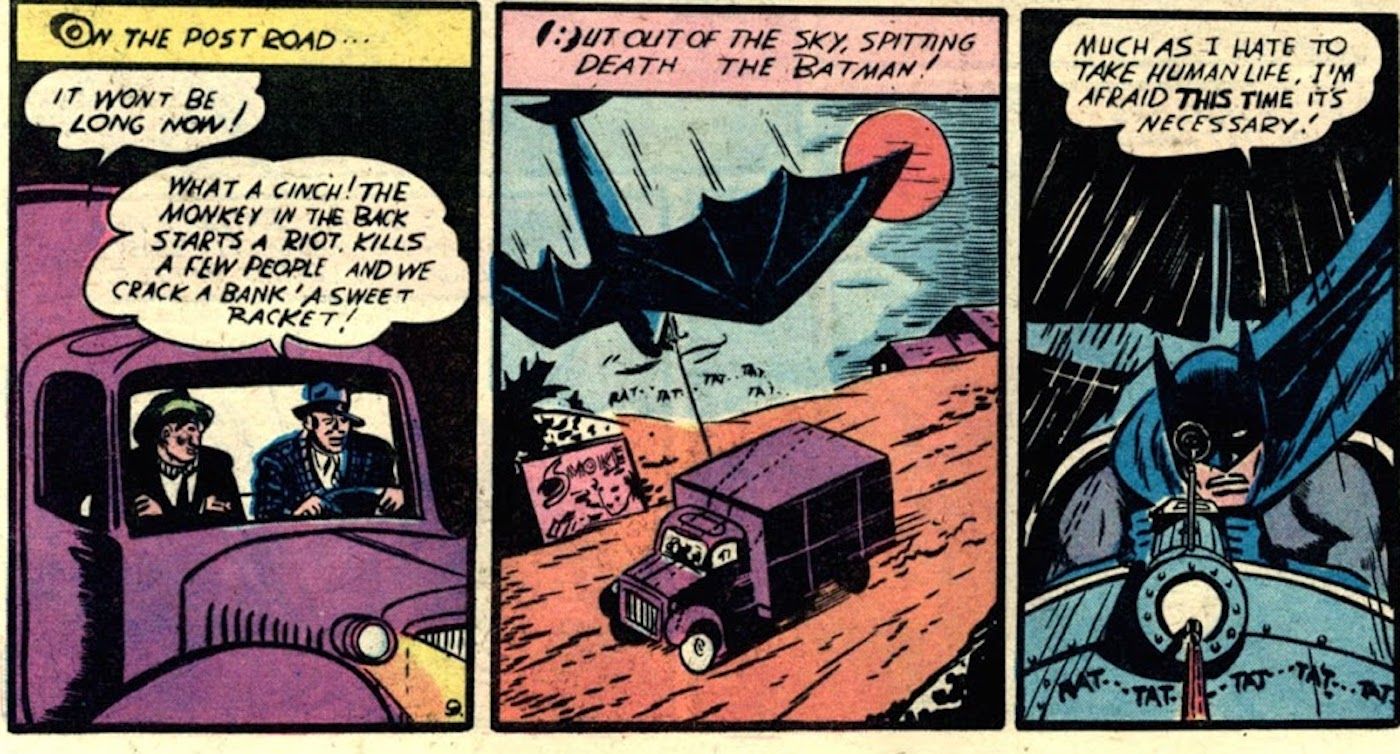Batman didn't always have a problem with murdering criminals, but the introduction of his famous "no kill" rule changed pop culture forever. In his first few months, the Caped Crusader was a gun-wielding killing machine. However, between concerned parents and ethically minded editors, the Dark Knight triggered one of the most significant moral shifts in the history of comic writing. The effects of one Batman comic still ripple throughout pop culture more than 80 years later.
Bruce Wayne was famously introduced in 1939 in Detective Comics #27 by Bob Kane and Bill Finger. In this six-page story, he deliberately kills at least one baddie by pushing him into a pool of acid. This trend of violence continued, with many of Batman's early comics featuring the hero brandishing a gun! This wasn't at all uncommon for comics at the time. Most comic book heroes used deadly force when necessary, like the real-world war heroes who were so popular after WWII. However, after the introduction of Robin in Detective Comics #38, Batman comics started to draw a younger audience. Parents began to express concern until a breaking point was reached in 1940 with Batman #1.
This issue sparked the need for the "no kill" rule that would come to define the Dark Knight. As Batman guns down several villains with a machine gun, he says, "Much as I hate to take human life, I'm afraid this time it's necessary." A few panels later he remarks, "He's probably better off this way," as he hangs a man by his neck from the Batplane. Parents were shocked, and editor Whitney Ellsworth agreed that some changes were necessary. He immediately told the artist to never show Batman using guns, and soon after issued a company-wide editorial policy for DC Comics that "Heroes should never kill a villain, no matter the depths of his villainy." This became a famous trademark of the character in Batman #4, when during a sword fight with pirates he tells his sidekick, "Use only the flat of your sword, Robin! Remember, we never kill with weapons of any kind!"
This shift in the company set a precedent for "family-friendly" superheroes for decades to come. It became extremely rare for any superheroes to be seen using deadly force ever. Many have noted that in cartoons and comics today, writers even go out of their way to avoid words like "kill," or "die." These practices are remnants of standards enforced by the Comics Code Authority established in 1954, which formalized many of the regulations set for DC by Ellsworth. While writers weren't legally required to follow CCA guidelines, most retailers refused to sell comics that did not carry the CCA stamp of approval, according to comic book historian Dr. Amy Kiste Nybgerg. Nowadays, any piece of fiction depicting a more realistic side of crime-fighting is considered "gritty." Whether or not children should be watching their role models kill people is up for debate, however, the social norm remains in place even after 80 years.
Although the Defender of Gotham has long been considered among the darkest of heroes, it was he who set the standard for gentler heroes who followed him. His character has since been re-written many times to show the more brutal side of Batman, yet in most iterations, his one rule still remains. While some characters and readers may question the cost of his strict code, Batman's commitment to never killing, much like the impact it's had on pop culture, has endured.
Source: Thecomicbooks.com, Dr. Amy Kiste Nybgerg


